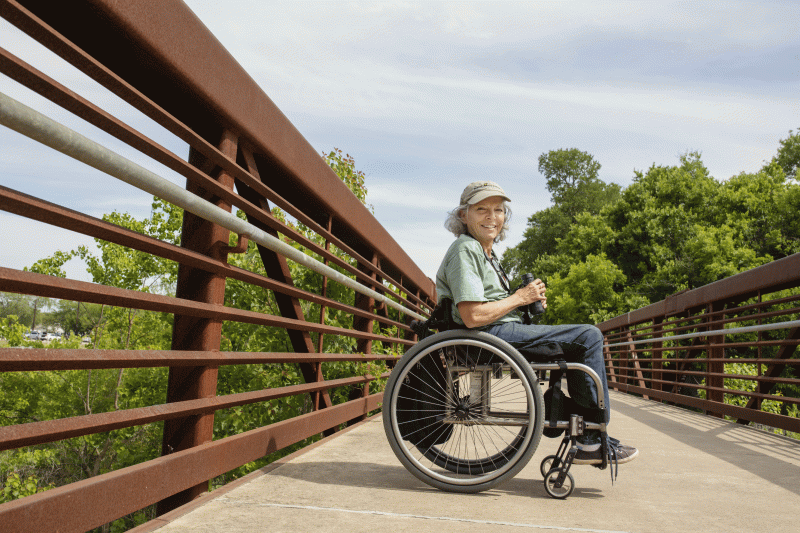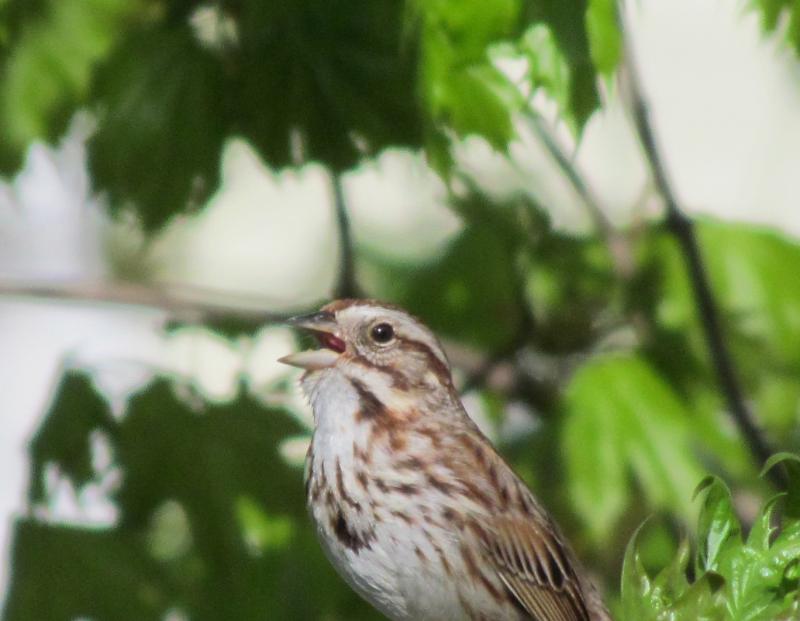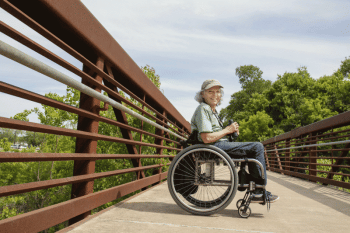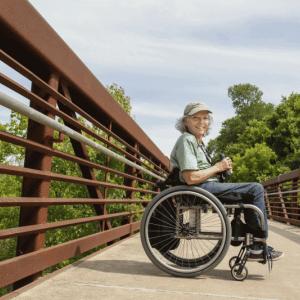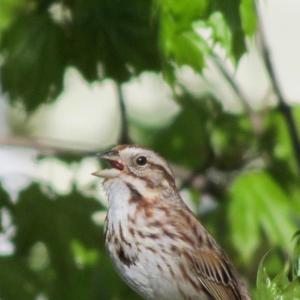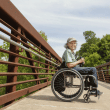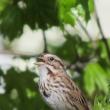Birds that Inspire Thoughts about Accessibility
A few weeks ago, we noticed that one of the pair of our resident song sparrows was balancing oddly on the clothesline, struggling to keep its balance as the line swayed in the breeze. A closer look revealed the fact that one of the bird’s legs was dangling awkwardly and rather lifelessly. The bird was balancing on its one healthy leg. We were saddened, of course, to see this, then angered when we decided that one of the many neighborhood cats that hunt in our yard was probably to blame. The idea that one of the cats from a neighbor’s home had almost killed and ended up maiming this bird in our yard was especially maddening because we have always kept our own two cats indoors, all the time, to do our part to prevent such an occurrence. (Keeping cats indoors is healthier and safer for cats, too!)
Our feelings toward the injured bird have since come to include a sense of awe and inspiration. We’ve seen the bird in the bird bath in the flower garden, tending to its own self-maintenance and finding water to drink despite its injury. We’ve seen it sitting in and near the platform bird feeder in the lilac beside the kitchen, munching on seeds. Despite having to do everything on one leg and, it’s fair to assume, experiencing immense pain, this bird and its mate have been carrying food to what we presume must be newly fledged youngsters in the hedges.
Over the years, we have seen one-legged gulls more often than one might imagine. It’s hard to know how often that injury is the result of one of those birds becoming tangled in some fishing line that eventually tightens and cuts off the blood supply, or from getting a foot caught in an empty tin can or even having a foot snapped off from below the surface of the sea by a hungry fish. One-legged gulls seem to do ok. Having wings and a strong bill is apparently enough to scavenge for food successfully. Occasionally, individually distinctive one-legged gulls have been known to survive for many years, sometimes becoming well known and loved enough that they have a small following of humans who make sure they are getting food aplenty.
Peoples, too, can have injuries or issues that make it tougher to get around, including to visit places that are good for birding. We well remember meeting an amazing man who birded from his wheel chair when we were birding at the famed Montezuma National Wildlife Refuge at the other end of Cayuga Lake from Ithaca, New York, where the Cornell Lab of Ornithology is located. We were new to the area, and he and his wife showed us around some of the birding spots in Montezuma. Then they were kind and gracious enough to not only tell us about the best nearby restaurants but also to invite us to join them at their favorite one.
We’ve often thought about our friend who birded from his wheelchair when we’ve visited different birding spots and pondered the question of whether the site would have been accessible to him. We know that not all natural places can be accessible to everyone for a variety of reasons. But what would be great is if it were possible to quickly access information ahead of time to find places that are most accessible and how.
Fortunately, there is a movement underway to do just that. It’s called Birdability. National Audubon has a Birdability story map website that allows people to plot birding spots on a map and provide information on their accessibility so that birders know what to expect by way of accessibility and can plan their birding trips. Many other organizations are working to provide the detailed information that can help people of all mobilities plan their birding trips. Perhaps you will be one of the people to share your experience at a favorite, very accessible birding site so that others can enjoy it, too!
Jeffrey V. Wells, Ph.D., is a Fellow of the Cornell Lab of Ornithology and Vice President of Boreal Conservation for National Audubon. Dr. Wells is one of the nation's leading bird experts and conservation biologists and author of the “Birder’s Conservation Handbook.” His grandfather, the late John Chase, was a columnist for the Boothbay Register for many years. Allison Childs Wells, formerly of the Cornell Lab of Ornithology, is a senior director at the Natural Resources Council of Maine, a nonprofit membership organization working statewide to protect the nature of Maine. Both are widely published natural history writers and are the authors of the popular book, “Maine’s Favorite Birds” (Tilbury House) and “Birds of Aruba, Bonaire, and Curaçao: A Site and Field Guide,” (Cornell University Press).
Event Date
Address
United States

